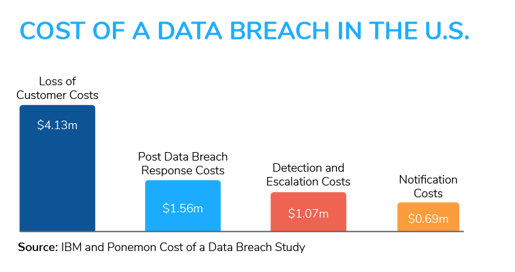For most organizations, the biggest cyber security threat isn't an issue of having the latest and most sophisticated technologies.
More often than not, security breaches happen when criminals use social engineering techniques to obtain employees' login credentials or install malware on the network so they can gain access to a company's confidential information.
It doesn't matter if you have the latest anti-virus software or the most air-tight firewall -- if one employee falls victim to a social engineering scheme or phishing scam, the IT security of the entire organization can be at risk.
The most effective way to defend your organization against these attacks is by providing cyber security training to all employees and contractors to ensure that they don't accidentally compromise sensitive data.
How to Design an Employee Training Program on Cyber Security
Ongoing cyber security training helps ensure that all your staff has the latest knowledge on how to protect themselves and your company from cyber attacks.
Here's how to ensure the effectiveness of your training program:
Get Buy-In From Leadership
Cyber security is often a topic that flies under the radar until a breach occurs. Don't let that happen to your organization!
Make sure senior leadership is aware of the high costs of down time and implications of such breaches (e.g., impact on the organization's reputation) and secure the proper funding, support, and equipment for the continued implementation of preventive measures.
Include Cyber Security Training in Onboarding Process
Every employee or contractor needs to be aware of your cyber security protocol from day 1, as soon as they're hired and have access to your network.
Including cyber security training in the employee onboarding process not only ensures that new employees know how to stay safe but also creates a culture of awareness.
Communicate the High Cost of a Security Breach
Often times, employees don't have the "big picture" view on how a security breach could impact the organization. For example, financial losses, fines incurred, damaged reputation, or losing customers' trust.
Communicating the impact of a breach, backed by specific data, can help employees understand the importance of adhering to the guidelines.
Establish Rules on Email Security, Internet Browsing, and Social Media Usage
Email scams, phishing sites, and social media spying are by far the most common ways for criminals to lure employees into downloading malware or divulging their login credentials for accessing valuable and sensitive information.
Your employee training should encourage a culture of "safe browsing," provide easy-to-follow guidelines and offer the necessary support for proper implementation.
Safeguard Mobile Device Usage
The "Bring Your Own Device" (BYOD) trend has allowed organizations to increase employee productivity while lowering cost. However, it also introduces a new set of security risks that criminals can exploit.
Implement a Mobile Device Management (MDM) policy and make sure that all devices your employees use to access the company's network or cloud computing platforms are properly secured and monitored.
Beef Up Your Cyber Security
Cyber crime damages are projected to cost $6 trillion annually by 2021 while 81% of organizations claim that negligent or careless employees are the top cyber security risks.
Your IT security needs to continually evolve to respond to the latest threats and social engineering techniques. If you don't feel you have the right resources in place to make sure your company is protected and your employees properly trained, reach out to us and let us know how we can assist.
Click below to request a consultation with one of our security consultants!




